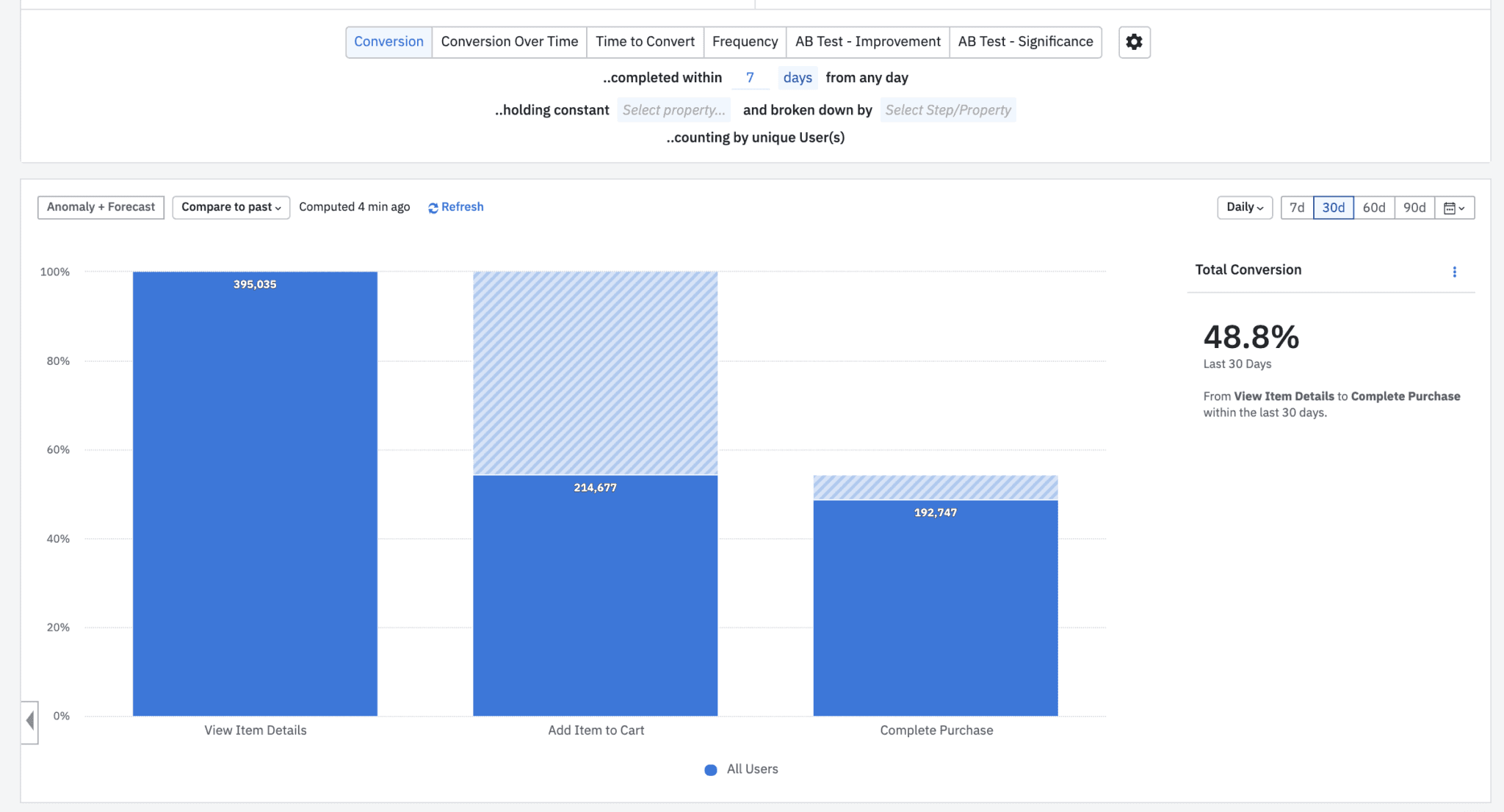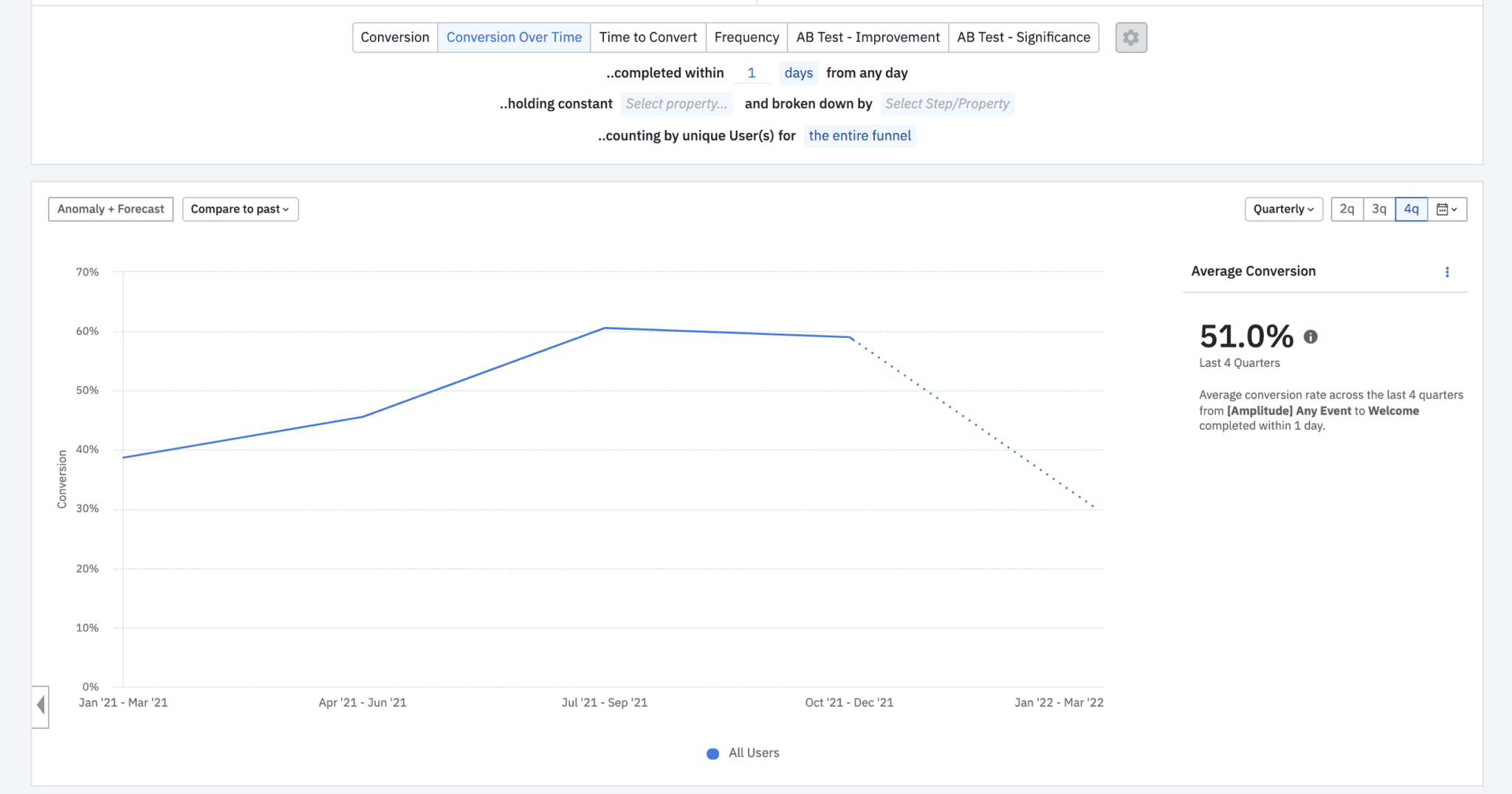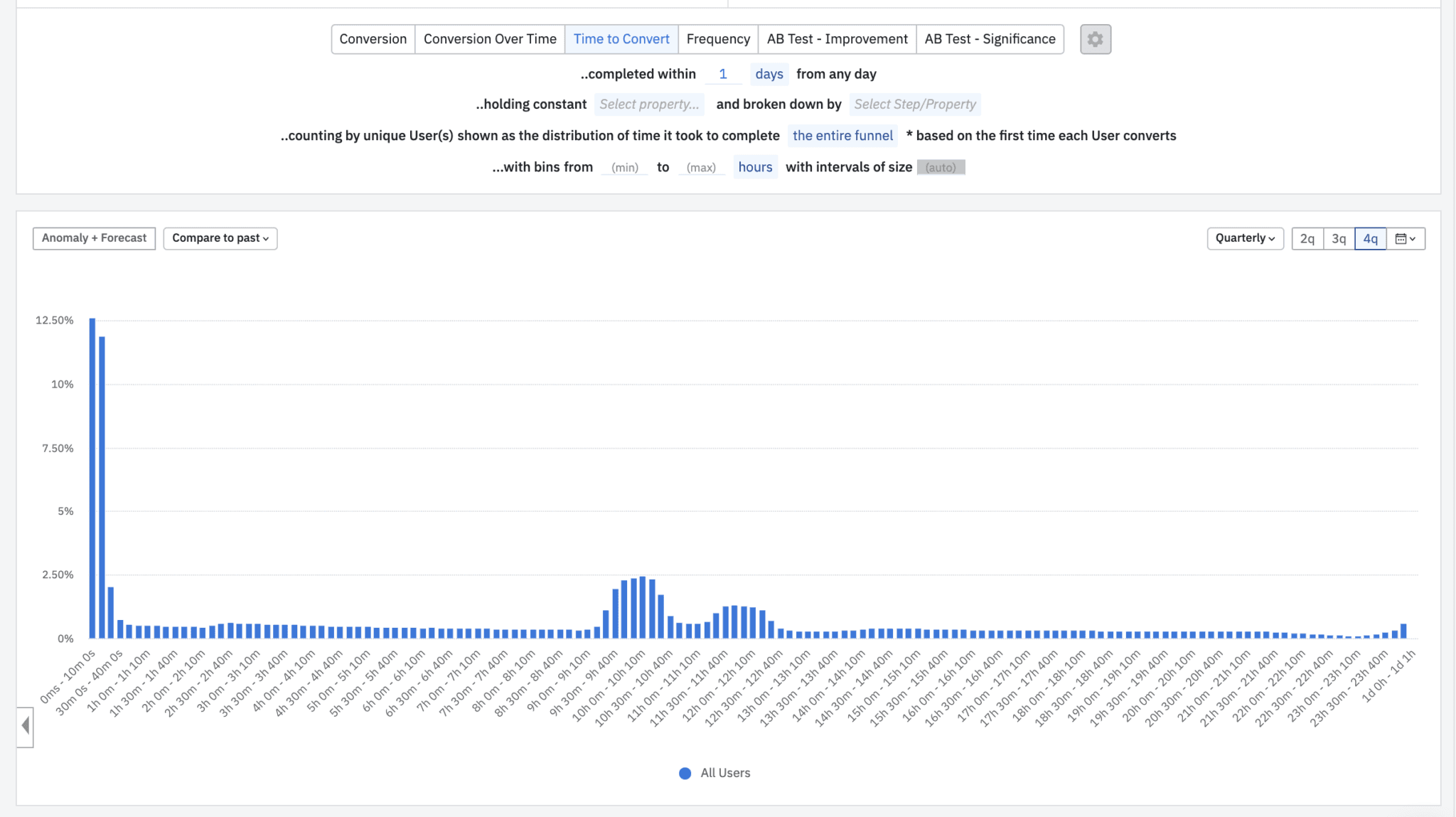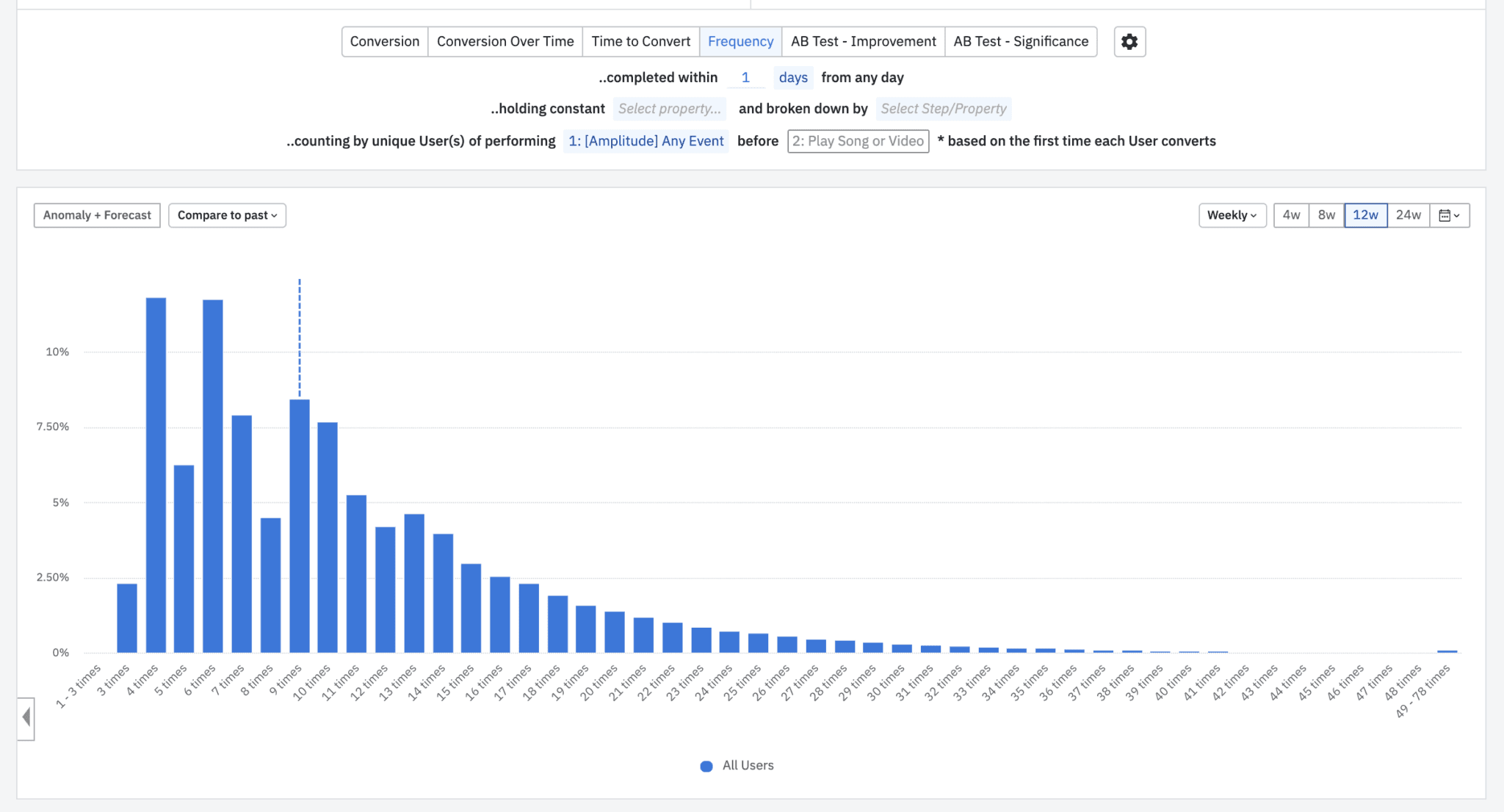What Is Funnel Analysis? Definition, Examples, and Tools
Use funnel analysis to identify key events along the customer journey and improve metrics like acquisition and conversion.
Originally published on January 19, 2022
Browse by category
Not all prospects will become customers, and not all customers will immediately find the value of your product. Funnel analysis can help you pinpoint key events along the customer journey so you can conduct tests, improve the user experience, and increase conversions.
What Is Funnel Analysis?
Funnel analysis is a method used to analyze the sequence of events leading up to a point of conversion. Events within the funnel take place inside products, mobile apps, websites, emails, or other digital touchpoints. Funnel analysis lets product and marketing managers understand user behaviors and the obstacles encountered throughout the customer journey.
As users travel this digital path, they will probably encounter experiences that prevent them from reaching the desired outcome. You can improve the points of friction to encourage users to travel further down the funnel by zooming in on each step.
According to TechCrunch, “From leads all the way through to engagement, conversion and retention, understanding each step and making even small optimizations at any stage will have down-funnel implications.”
As an example, let’s say you’re trying to convert free trial prospects into paid subscribers. Your funnel might look like this:
- Step 1: Prospects open an email and discover an offer for a free trial.
- Step 2: They click on a CTA button to redeem the free trial.
- Step 3: Prospects create an account and use your product for free.
- Step 4: Prospects convert to paid customers after the free trial expires.
Many distractions or barriers can happen in between each of these steps, and there are likely patterns of behavior that can tip you off to what’s working and what’s not. Perhaps prospects are dropping off at step 3 because of a multi-device activation required to create an account?
Maybe you discover that if you can usher prospects past step 3, you have a stronger chance of conversion. Without funnel analysis, you’ll miss these opportunities to delight customers and drive business outcomes.
Key Takeaways
- Funnel analysis is a method used to visualize, measure, and understand key user behaviors throughout the customer journey.
- As customer habits and patterns shift, you’ll need to be able to monitor those differences ASAP. Funnel analysis alerts you when something isn’t right, so you can keep users on their path to conversion.
- Funnel analysis is nearly indiTakeawaysspensable when it comes to product improvement, personalization, and creating smooth customer journeys.
The Importance and Benefits of Funnel Analysis for Your Product
At its core, funnel analysis is important because it allows you to monitor user actions and behaviors. This is critical because those behaviors reveal the intention and motivation of your customers.
Funnels are not just used in sales or marketing to create prospects, they are also important for customer retention. Once you know what your customers want, you can inject that value into each step of the customer journey.
Although every business has unique goals, funnel analysis can be used to:
- Improve conversion. Conversion funnel analysis can support a lot of outcomes or specific goals. The final step for a user might be clicking a “Sign Up” button or downloading a PDF. Funnel analysis enables you to find out what’s preventing users from reaching the end destination. Each stage of the funnel poses opportunities for a smoother, more personalized journey to the end of the funnel.
- Streamline the funnel. Your company probably supports multiple points of digital interaction, such as websites, mobile apps, email, or dashboards. Each one has a funnel of its own, but together, they represent one overall customer journey funnel Funnel analysis can provide a macro perspective on how each of those funnels links together.
- Merge marketing and product teams. Oftentimes, marketing teams are focused on converting prospects into customers, while product teams are primarily focused on retaining those customers. Funnel analysis presents an opportunity for both teams to cross-pollinate data and insights. If prospects respond positively to a certain aspect of the marketing funnel, they may stick around if they find that same value in the product funnel.
4 Ways to Use Funnel Analytics
Funnel analytics presents many different ways to extract insights from the data you collect. How you interpret funnel data and leverage it to achieve goals is native to your business and industry.
1. Conversion: This is the default mode of analyzing your funnel. It measures the number of users who have converted through each step of your funnel. Depending on the platform, this data can be visualized through a chart or bar graph. The results of this method should immediately alert you if there’s a problem. If there’s a severe drop-off of users during one step of the funnel, you’ll know where to center your efforts.

2. Conversion over time: Conversion over time lets you see conversion rates for users who enter the funnel on a certain date. Users don’t necessarily have to complete the funnel to appear in your analysis. This is useful when it comes to understanding how your funnel operates through different times of the year, like holidays or special events.

3. Time to convert: An important factor in analyzing a funnel is time. How long should it take for each user to click through each step? These user tendencies can confirm that your funnel sequence is operating as designed. For instance, someone shopping on a quick-service restaurant app should convert faster than someone shopping on a tax service app. By breaking conversion down by hours, days, weeks, and months, you can alter the flow of your funnel in a way that’s meaningful to your business.

4. Frequency: How many times do users perform an action or behavior before they move on to the next step in the funnel? By measuring frequency, you can see exactly what your users are doing (and how often) throughout the funnel. Understanding the frequency of events can help you make changes to specific funnel steps to encourage higher conversion.

Oftentimes, problems in your funnel need to be approached from a unique angle or perspective. Funnel analytics provides a launchpad to start asking the right questions. Once you’re familiar with basic analysis methods, you can find innovative ways to overcome challenges.
Tools for Conducting Funnel Analysis
Analytics platforms are nearly indispensable for businesses that offer digital products and services. Without the right tech stack, it becomes extremely challenging to measure and improve things like conversion.
Amplitude’s Digital Analytics Platform offers a unified suite of products that gives you an in-depth understanding of how customers experience all of your digital touchpoints. Amplitude’s funnel analysis product is built for websites and products, giving a more holistic perspective on data.
Any event or user behavior can be measured and tracked, not just page views or sessions. When conducting funnel analysis in Amplitude, you can order the events of your funnel, segment behavioral cohorts, and set specific conversion windows.
To meet the needs of companies across every industry, Amplitude’s funnel analysis chart is flexible and customizable, making it an ideal option for multiple teams or stakeholders. Easily leave notes for teammates or quickly share a link to a funnel view.
Real-World Examples of Funnel Analytics
Many companies are taking advantage of funnel analysis because understanding the customer journey is critical to building successful products. The power of funnel analysis comes from its utility—although it’s only one tool, it can be used to solve a host of various challenges. Below are two funnel analysis examples, so you can have a better idea of what’s possible.
Patreon Increases Subscriber Conversions with Funnel Analysis
Patreon provides creators, artists, and entrepreneurs with the opportunity to earn a living through donations. Users can “pledge” donations to creators on Patreon’s platform, and when creators win, Patreon wins. Patreon faced a conversion challenge—they needed to find new ways to incentivize monthly subscriptions to creator content.
Patreon discovered an opportunity to improve the pledge flow funnel through Amplitude’s funnel analysis chart. Patreon tested a new feature called “blurred posts” to encourage more users to click through the pledge flow. These blurred posts concealed a portion of creator content, enticing users to delve deeper into the pledge flow funnel and ultimately subscribe. The result? Patreon was able to double pledge conversions on creator pages.
Mindbody Uses Funnel Analysis to Drive Conversion with New Features
Mindbody is a digital application that connects customers with fitness experts. Users can book classes, track fitness progress, and find local deals. Using Amplitude’s funnel analysis tool, Mindbody tested a new app feature, the “Activity Dashboard,” to find out how it would influence the conversion rate of booked classes.
Mindbody created behavioral cohorts—groups of users categorized by behavior—to conduct their analysis. Cohorts were segmented into two groups: those who interacted with the Activity Dashboard and those who did not.
After comparing the two groups in the funnel analysis chart, they noticed a huge lift in conversions. The group that used the Activity Dashboard booked 24% more classes per week. Based on this success, Mindbody placed the new feature in the navigation bar to make it more noticeable.
References
- Build and Analyze a Funnel Analysis Chart Video, Amplitude
- Funnel Analysis and Its Use Cases Live Session, Amplitude
- In freemium marketing, product analytics are the difference between conversion and confusion, TechCrunch
- Don’t Throw Your Customers–And Your Business–Down The Funnel, Forbes
- Optimize Your Marketing Funnel With These Three Questions, Forbes
- Designing Customer Journeys for the Post-Pandemic World, Harvard Business Review

Sam Edwards
Former Global Technology Partner Manager, Amplitude
Sam is a global technology partner manager at Amplitude and former solutions engineer and customer success manager. She specializes in helping businesses reach their revenue goals, scale for growth, and build the best product for their users.
More from Sam




